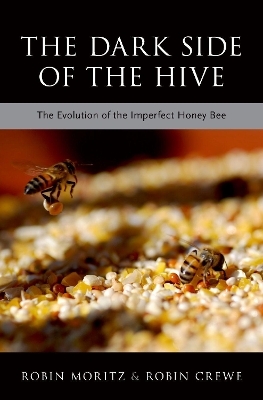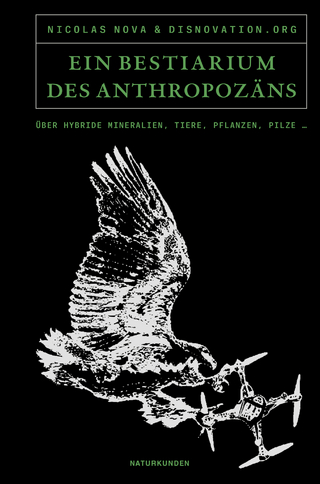
The Dark Side of the Hive
The Evolution of the Imperfect Honeybee
Seiten
2018
Oxford University Press Inc (Verlag)
978-0-19-087228-1 (ISBN)
Oxford University Press Inc (Verlag)
978-0-19-087228-1 (ISBN)
Honey bees have been described as exceptionally clever, well-organized, mutualistic, collaborative, busy, efficient--in short a perfect society. In The Dark Side of the Hive, authors Robin Moritz and Robin Crewe write about the life history of the honey bee, Apis mellifera, focusing on the "dark side of the hive" including cheating, robbery, worker inefficiency, and unfair reproduction strategies.
Honey bees have been described as exceptionally clever, well-organized, mutualistic, collaborative, busy, efficient--in short a perfect society. While the colony is indeed a marvel of harmonious, efficient organization, it also has a considerable dark side. Authors Robin Moritz and Robin Crewe write about the life history of the honey bee, Apis mellifera, highlighting conflict rather than harmony, failure rather than success, from the perspective of the individual worker in the colony. When one looks carefully, the honey bee colony is far from being perfect. As with any complex social system, honeybee societies are prone to error, robbery, cheating, and social parasitism. Nevertheless, the hive gets by remarkably well in spite of many seemingly odd biological features.
The perfection that is perceived to exist in the honeybee's social organization is the function of a focus on the colony as a whole rather than exploring the idiosyncrasies of its individual members. The Dark Side of the Hive thus focuses on the role of the individual rather than that of the collective. Moritz and Crewe dissect the various careers that individual male and female honey bees can take and their role in colony organization. Competition between individuals using both physical and chemical force drives colonial organization. This book deals with individual mistakes, maladaptations and evolutionary dead-ends that are also part of the bees' life. The story told about these dark sides of the colony spans the full range of biological disciplines ranging from genomics to systems biology.
Honey bees have been described as exceptionally clever, well-organized, mutualistic, collaborative, busy, efficient--in short a perfect society. While the colony is indeed a marvel of harmonious, efficient organization, it also has a considerable dark side. Authors Robin Moritz and Robin Crewe write about the life history of the honey bee, Apis mellifera, highlighting conflict rather than harmony, failure rather than success, from the perspective of the individual worker in the colony. When one looks carefully, the honey bee colony is far from being perfect. As with any complex social system, honeybee societies are prone to error, robbery, cheating, and social parasitism. Nevertheless, the hive gets by remarkably well in spite of many seemingly odd biological features.
The perfection that is perceived to exist in the honeybee's social organization is the function of a focus on the colony as a whole rather than exploring the idiosyncrasies of its individual members. The Dark Side of the Hive thus focuses on the role of the individual rather than that of the collective. Moritz and Crewe dissect the various careers that individual male and female honey bees can take and their role in colony organization. Competition between individuals using both physical and chemical force drives colonial organization. This book deals with individual mistakes, maladaptations and evolutionary dead-ends that are also part of the bees' life. The story told about these dark sides of the colony spans the full range of biological disciplines ranging from genomics to systems biology.
Robin Moritz is Emeritus Professor of Molecular Ecology at the Martin-Luther University Halle-Wittenberg. Robin Crewe is Emeritus Vice-principal of the University of Pretoria
Preface
Chapter 1: Introduction
Chapter 2: Out of the Dark
Chapter 3: A Difficult Diet
Chapter 4: The Chemistry of Social Regulation
Chapter 5: The Reproductive Machine
Chapter 6: The Worker Bee in a Variety of Guises
Chapter 7: Diseases, Pests and Parasites
Chapter 8: The Idiosyncrasies of Sex and Reproduction
Chapter 9: Apiculture and Long Suffering Bees
Chapter 10: Dark Sides of Honey Bee Science
Chapter 11: A Silver Lining for the Future of Bees?
References
| Erscheinungsdatum | 20.09.2018 |
|---|---|
| Zusatzinfo | 64 |
| Verlagsort | New York |
| Sprache | englisch |
| Maße | 236 x 160 mm |
| Gewicht | 544 g |
| Themenwelt | Naturwissenschaften ► Biologie ► Allgemeines / Lexika |
| Naturwissenschaften ► Biologie ► Evolution | |
| Naturwissenschaften ► Biologie ► Zoologie | |
| ISBN-10 | 0-19-087228-4 / 0190872284 |
| ISBN-13 | 978-0-19-087228-1 / 9780190872281 |
| Zustand | Neuware |
| Haben Sie eine Frage zum Produkt? |
Mehr entdecken
aus dem Bereich
aus dem Bereich
Über hybride Mineralien, Tiere, Pflanzen, Pilze ...
Buch | Hardcover (2023)
Matthes & Seitz (Verlag)
28,00 €
Band 2: Elektrizität, Optik und Wellen
Buch | Softcover (2022)
Wiley-VCH (Verlag)
39,90 €
Berufsbilder von und für Biologen und Biowissenschaftler
Buch | Softcover (2024)
Verband Biologie, Biowiss. u. Biomedizin in Dtl. e.V. (Verlag)
16,80 €


